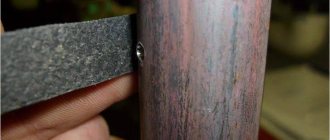Residents of multi-storey buildings are looking forward to the beginning of the heating season: finally, the apartment will become warm, and there will be no need to use electric heaters. However, this situation often arises: the heat has already been turned on, but for some reason the batteries remain cold. What to do?
Expert opinion
Anton Tsugunov
Construction expert. Entrepreneur. 17 years of experience. More than 100 completed objects.
You should find out the reasons why the coolant is not circulating through your battery. Based on the information received, determine an algorithm of actions and find out where to turn. Let's find out!
Why are the batteries in the apartment cold? Let’s find out the reasons
First you need to make sure that the heating is really turned on, and the heating system of the apartment receives coolant at the required temperature. You should start worrying if:
- the risers are hot, but the radiators are not,
- the neighbors have heat, but you don’t,
- the battery does not warm up completely (only from the bottom or top, or from one side),
- the radiator is slightly warm, and the riser is boiling water,
- the pipes made a lot of noise for more than two days, but heat still did not enter the apartment,
- The housing office told you that heating was installed in your house more than a week ago, but the radiators and risers are cold.
If your risers are making noise but not warming up, it means the heating is just starting up. Perhaps the plumbers are removing air from the system, or a leak has been discovered in someone's house. In this case, they can repeatedly pour water into the system and drain it. If there is no noise in the pipes for more than two days, and no heat has arrived, you can already call the management company and tell them about your situation.
In the absence of problems with the central network, the causes of cold radiators include:
USEFUL INFORMATION: Who must change batteries in a privatized apartment by law
- presence of air pockets in the system;
- clogged batteries;
- Incorrect connection of heating network elements.
In each situation, a certain amount of work will need to be done to make cold radiators hot.

Clogged heating system

Rust, salt deposits and other contaminants can significantly reduce the diameter of the holes for the passage of coolant or completely close them. The problem causes the home owner to bleed the air, but the battery is still cold. The solution is cleaning with water under pressure or a special solution.

Deposits in the pipe
If shut-off valves are installed in front of the radiator, then the procedure can be completed even during the heating season . First, the coolant supply is shut off, then the connecting elements are unscrewed. In a private house, it is more convenient to take the battery outside and clean it there. In an apartment, they are usually placed in the bathroom, having previously protected the enamel of the bathtub from scratches and chips.
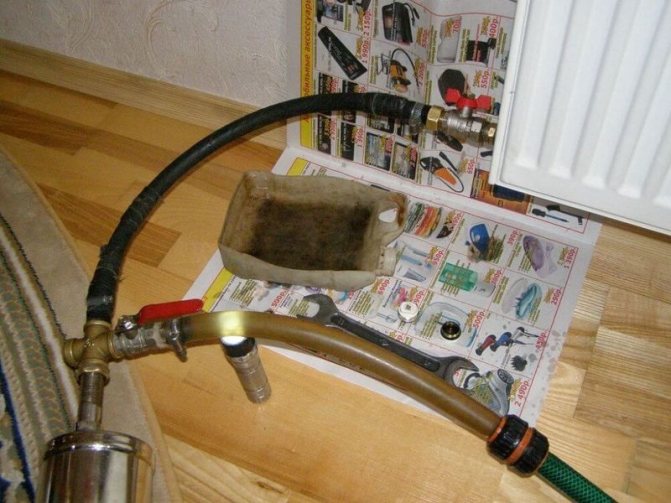
Pneumatic radiator flushing device
Water is supplied to the battery from a pneumatic device, and for best effect it must be hot. To remove rust and deposits, tap the radiator. In particularly advanced cases, a special mixture is poured in, which acts on the deposits for several hours, then is washed off.
With open access to the entire heating system, cleaning can be done without removing the radiators. The equipment is connected to the return hole, and a hose is installed at the other end of the system to remove contaminants. The procedure continues until clean water begins to flow freely from the pipes. Reviews from some homeowners indicate that washing does not always have a positive effect for a long time. Sometimes it’s easier to replace old radiators with new ones than to clean the entire system every 1-2 years. This is especially true for cast iron batteries, which are more susceptible to corrosion inside than others.
The information presented allows you to understand what to do if you bleed the air and the batteries are cold. First of all, you need to make sure there is sufficient pressure in the pipes, otherwise the coolant will not circulate through the radiators furthest from the boiler. If poor heating is observed constantly, the radiators may be connected incorrectly to the system. However, the most common reason in this case is contamination of pipes and batteries, which requires cleaning using special equipment.
Air jams
The most common reason for the lack of coolant circulation is air pockets that form due to a leak, rapid filling of the system, or as a result of heating the water. They appear especially often in apartments on the upper floors. This phenomenon is called airing of the system.
Expert opinion
Anton Tsugunov
Construction expert. Entrepreneur. 17 years of experience. More than 100 completed objects.
To make cold radiators hot, you need to remove air from the system. Modern models are equipped with special exhaust valves located at the top of the batteries; they operate in automatic mode. Also, a Mayevsky valve or a bleed valve can be installed on the radiators, with the help of which air is released manually.
The Mayevsky valve is a plug, inside of which there is a cone-shaped rod with a thread, which, when unscrewed, opens a through hole and removes the gaseous medium from the coolant.
USEFUL INFORMATION: How to bleed air from a heating radiator: use the Mayevsky tap
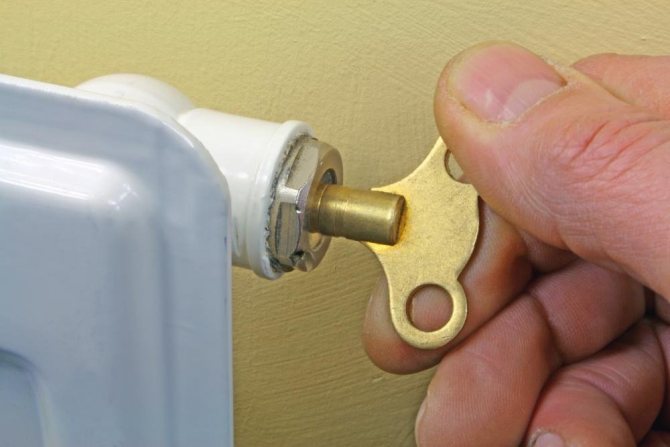
Here is an excellent video from Natalya Palchevskaya about how the Mayevsky faucet works and looks like, and explains in accessible language how to bleed the air. Natalia, thank you so much!
In this video, Igor Vasilievich shows how to install a Mayevsky tap in an old radiator and use it to remove air from the battery:
No circulation, heating failure - why
Failure in the heating system, deficiencies, imperfections, all lead to cold radiators. If there is no coolant circulation, then the reason needs to be determined. Most often, the answer to why the heating does not work is on the surface, obvious.
Let's look in order at the main causes of heating malfunctions, why water does not circulate through the pipes, and what needs to be done first.
Let's start with the simplest and most obvious reasons.
clogged, clogged
Every heating system must have a coarse filter. A very small device with a fine mesh and a sump (installed downwards! or at least to the side) saves equipment, pumps, and the boiler from coolant contamination that will be present in any system. Wood shavings, broken threads, rust, water sediment…. everything is retained by the mesh in the filter.
The sedimentation tank must be periodically untwisted and the mesh cleaned.
If the circulation in the heating system of a private house is disrupted, then the first thing you need to do is check the filter, which should be installed on the return line in front of the boiler.
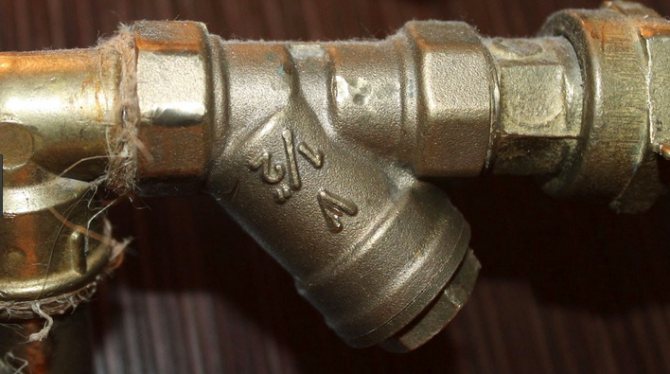
Air in the system, airing
Airing can occur in any closed piping system where air removal measures have not been taken. Air is always present in the coolant, including in a dissolved state, is released during pressure changes, and accumulates at the highest points. Including in the boiler.
Automatic air vents are installed at characteristic, highest points of the system, as well as on collectors and special separators - the normal circuit is equipped with a special air catching device in which air bubbles are released from the coolant.
We recommend: LED strip for lighting ceilings: we make lighting under the ceiling with an LED strip with our own hands
In addition, Mayevsky valves (manual air vents) should be on each radiator, and also possibly in other elevated places.
Checking the air supply, bleeding the air, installing air vents are common actions if circulation stops and the batteries are cold.

The circulation pump does not work
In private homes, the reason why the heating system stops working is a breakdown of the electrical equipment that controlled the movement of the coolant through the pipes.
If the heating suddenly stops working, then you need to check the functionality of the circulation pump near the solid fuel boiler or the pump in the automated boiler. In addition, the same unit can be installed in each circuit, which must work properly.
Bad polypropylene pipes
Often the consumer (customer) believes that polypropylene pipes are absolutely reliable and cannot cause heating problems or cold radiators.
But polypropylene is much more insidious than old steel or metal-plastic pipelines. Each place of soldering (welding) is a potential increased resistance in the system or a cause of cessation of circulation (weakened movement of water through the batteries), due to deposits of material inside.
It is impossible to control the quality of connections from the outside; all that remains is to cut out pieces, resolder, and remake polypropylene pipes.
Poor performance of a polypropylene system is a real problem for the home installer. Good professionals don’t take on this material at all.
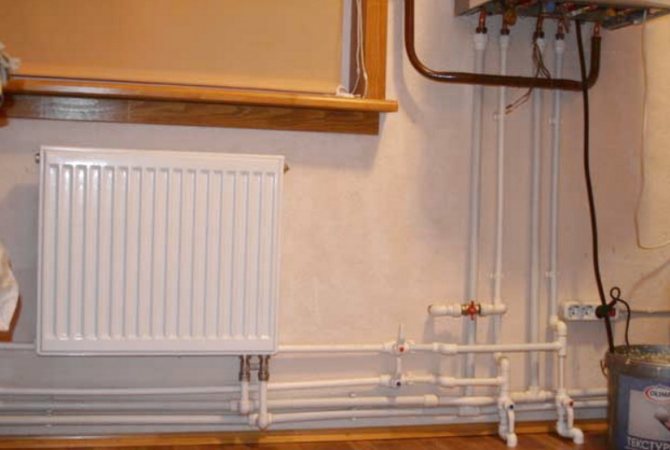
Bad project
It is not uncommon for poor circulation to occur where there is poor design. Typically, the batteries are not connected correctly, according to some sequential circuit, where the last battery in the circuit receives much less coolant.
Another bad design is single-pipe circuits, where it is also difficult to establish the necessary coolant circulation through each battery.
If the radiators do not heat up evenly, or there is poor coolant circulation on individual heating devices, first of all you need to consider how the connection corresponds to the classic circuits - shoulder, associated, radial. It is necessary to bring home heating to normal design standards, and then expect good circulation and uniform heating of the radiators.
Small diameter, overgrown pipes
Old steel pipes become overgrown with rust and deposits from the inside, their throughput capacity decreases significantly over time, and there is only one solution - they need to be replaced with modern ones.
But even during installation, for the sake of economy, mistakes can be made with the choice of pipeline diameter - on highways, on groups of heating devices, diameters of mm can be set. The result is noise in the pipes, excessive consumption of electricity, and insufficient coolant flow.
What pipe diameters should you choose?

A complex system
A type of bad design is an incorrectly designed complex heating system consisting of many heating circuits and several boilers. Here entire circuits will not work correctly if the work of one affects the neighboring one.
As a rule, one boiler (the backup one does not count) and three circuits - boiler, radiators, heated floors with their pumps are coordinated normally, and no questions arise. But if you connect another working boiler plus a circuit (for example, heating a garage and greenhouse), then the system will become complex. It is difficult to say how the coolant will circulate in it without equalizing the pressures at the connection points.
In complex systems, a competent design is important, installing a hydraulic arrow or an equal pressure ring; more information about the hydraulic separator can be found here
No balancing
Many home heating schemes involve balancing; balancing and control valves are installed in them. For example, between floors, between shoulders, and for each radiator. The taps cover the direction with less hydraulic resistance; accordingly, more coolant will flow to other points.
Children can play with the taps. Or the system is initially unbalanced. Setting up, as a rule, is no problem, you just need to find this tap... How to set up home heating
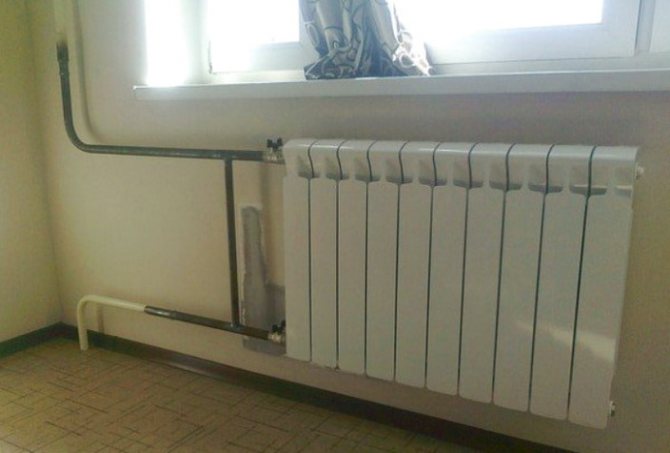
Neighbors don't provide heat
But complex heating project schemes are of little concern to residents of high-rise buildings, who have a separate riser for each radiator in the apartment. And if any radiator stops heating up normally, it means there is no circulation through the riser, therefore...
You need to contact the heating network, housing office (service organization) to adjust the power in the risers, and if this does not help, then with the requirement to check the neighbors.
Often, unauthorized connection or replacement of radiators and pipes in central heating systems leads to a redistribution of pressure, circulation through individual batteries decreases and disappears.
No circulation in gravity system
In gravity systems, the pressure difference is low; they are especially sensitive to air pockets, pipe diameters, and gaps in radiators.
In old circuits, gradual deposits occur in radiators and pipes; circulation may decrease over time, and the only cure for this is replacing everything with a more modern one.
You also need to pay attention to the correctness of the circuit itself - the middle heating line is below the cooling line (the boiler heat exchanger is below the radiators), and also - the hot feed rises up to the highest point, and from there it drops to the radiators... Read more about gravity flow circuits below
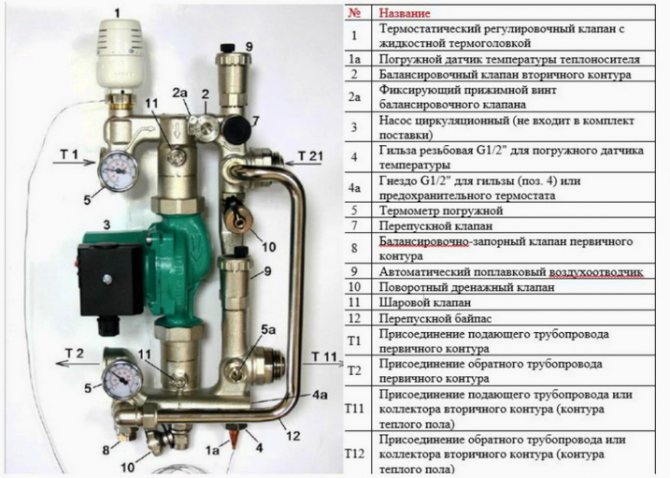
Various breakdowns in heating systems
The taps and valves are closed - check that everything is open to ensure circulation. There is a leak in the system - there is not enough coolant, check the pressure, eliminate the leak. Installation with flexible pipes - the pipe is pinched. Failure of automatic equipment - thermal heads on mixing units, radiators, the mixing units themselves - silting, failure, it is necessary to check the correct operation. Also – electronic failure. Incorrect balancing on the distribution collector - in beam circuits, complex systems, collectors with balancing and tuning equipment can cause a lack of circulation anywhere due to breakdowns and incorrect settings. Low pressure, no air in the expansion tank - check the pressure in the pipes and the pumping of the tank; automated units will not work at all without the required pressure. Violation of the circuit, excess bypass - check that the installation complies with the design, the logic of the circuit, whether there are any short circuits in the jet, parallel branches to radiators and circuits.
We recommend: Do-it-yourself solar air collector: step-by-step process, how to do it right
Source: teplodom1.ru
Connection errors
Another reason why batteries may remain cold is incorrect connection of heating system elements. The biggest mistake is connecting radiators to pipes, in which water is supplied from below. In this case, the sections are heated unevenly, and part of it remains cold. This is most often typical for side connections. What should I do to ensure that the surface of the radiators heats up evenly and the apartment becomes warm? To do this, you need to correctly connect them to the system.
USEFUL INFORMATION: How to install a tap on a radiator
Too many sections can also contribute to uneven heating, since coolant circulation is difficult. A special extension cord connected to the pipe that supplies hot water to the battery will help improve it.
Expert opinion
Anton Tsugunov
Construction expert. Entrepreneur. 17 years of experience. More than 100 completed objects.
Advice! For uniform heating of radiators, the best option is a diagonal connection, which ensures maximum efficiency of the heating system.
The radiator does not heat. What to do?
- share on social networks
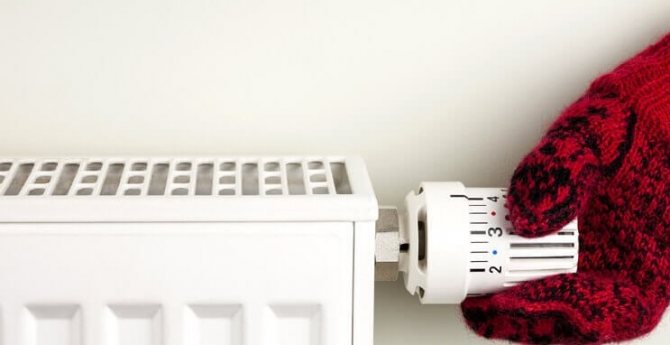
With the onset of cold weather, many are faced with the problem of non-functioning radiators and ask a reasonable question: “Why are the batteries cold? After all, everything was fine last winter.” This problem, by the way, is one of the most common in the heating sector. Why does this happen, what reasons can provoke the problem and what should you do if you freeze at the very beginning of winter? Let's figure it out.
Are the radiators in your apartment heating poorly?
So, first you need to do a superficial check. It doesn’t take much time, but in this way you can eliminate factors not related to breakdown or malfunction.
1. Pay attention to the valve. The battery may be blocked. In order to assess whether the valve is in the correct position, you need to remember that when open it must stand parallel to the pipe. When the valve is closed, it takes a perpendicular position. For clarity, take a look at the picture.

2. Contact the management company. There they must inform you about heating outages.
3. Discuss the problem with your neighbors. In many houses in our country, the coolant supply system is a single-pipe version. In simple terms, with such a system, one pipe goes to the ceiling and one to the floor. In addition, neighbors, as a rule, do not have jumpers between pipes (bypasses). Thus, when a neighbor on the second floor blocks the radiator, all the residents above will suffer, since heating, in this case, is turned off for all apartments along the riser. What should be done? It's simple: check if the heating of your neighbors below and above is blocked (in some cases, the coolant is supplied from the upper floors).
We recommend: Malfunctions of pumping stations and their elimination

We have looked at the simplest reasons that can make you freeze in your own apartment. Unfortunately, heating problems are not always of such a banal nature, so we suggest that you familiarize yourself with the malfunctions and problems that are directly related to heating radiators.









